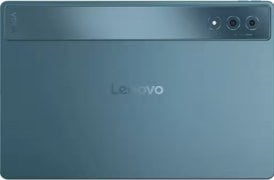- Home
- Science
- Science News
- Silicon Carbide Based Motor Drive Enables a Smaller, Lighter Electric Aircraft Engine
Silicon Carbide-Based Motor Drive Enables a Smaller, Lighter Electric Aircraft Engine
Silicon carbide inverter enables smaller, lighter, and more efficient hybrid aircraft engines.
Photo Credit: UA Power Group
Hybrid Cessna 337 tests new silicon carbide-based motor drive for lighter, efficient flight.
A hybrid version of the Cessna 337 recently took to the skies over Southern California with an electric engine using a silicon-carbide-based inverter created by the UA Power Group. The test demonstrated that this next-gen motor drive system can replace older silicon-based electronics, providing a smaller footprint, lighter weight, and improved efficiency. Described in the IEEE Transactions on Power Electronics, the research shows that faster-switching silicon carbide transistors can enable us and other companies to reduce energy loss so much that we lower or eliminate the need for cooling equipment because supporting components—such as capacitors and transformers—can be shrunk, a huge priority for aircraft where every kilogram counts.
Silicon Carbide Inverter Boosts Hybrid Aircraft Efficiency, Reduces Weight, and Frees Cabin Space
According to the published report, the UA Power Group designed a silicon carbide-based inverter that converts battery power into the alternating current needed for the electric motor. Conventional silicon transistors lose energy as heat when switching on and off, but the silicon carbide switches on and off up to 1,000 times faster and can eliminate 90 per cent of that wasted energy, which in jet aircraft raises efficiency while reducing weight. Its lighter system saves energy also during takeoff and flight mode, while the small size of the system releases space in the cabin, thus improving passengers' well-being.
Researchers noted that aircraft pose unique challenges for electric systems, from vibration and landing shocks to electrostatic issues at high altitudes. The successful flight proved that the UA Power Group overcame these issues, achieving a stable and reliable motor drive suitable for aviation applications.
The team pointed to wider applications of their work. Efficient, lightweight inverters may boost hybrid and electric aircraft adoption, while students gain practical engineering experience for aerospace and electronics careers.
Get your daily dose of tech news, reviews, and insights, in under 80 characters on Gadgets 360 Turbo. Connect with fellow tech lovers on our Forum. Follow us on X, Facebook, WhatsApp, Threads and Google News for instant updates. Catch all the action on our YouTube channel.
- Samsung Galaxy Unpacked 2025
- ChatGPT
- Redmi Note 14 Pro+
- iPhone 16
- Apple Vision Pro
- Oneplus 12
- OnePlus Nord CE 3 Lite 5G
- iPhone 13
- Xiaomi 14 Pro
- Oppo Find N3
- Tecno Spark Go (2023)
- Realme V30
- Best Phones Under 25000
- Samsung Galaxy S24 Series
- Cryptocurrency
- iQoo 12
- Samsung Galaxy S24 Ultra
- Giottus
- Samsung Galaxy Z Flip 5
- Apple 'Scary Fast'
- Housefull 5
- GoPro Hero 12 Black Review
- Invincible Season 2
- JioGlass
- HD Ready TV
- Laptop Under 50000
- Smartwatch Under 10000
- Latest Mobile Phones
- Compare Phones
- Moto G Play (2026)
- Moto G (2026)
- Moto G67 Power 5G
- Realme C85 Pro 4G
- Realme C85 5G
- Vivo Y19s 5G
- Motorola G67 Power 5G
- iQOO Neo 11
- MacBook Pro 14-inch (M5, 2025)
- Asus Vivobook S16 (S3607QA)
- iQOO Pad 5e
- OPPO Pad 5
- Garmin Venu X1
- Redmi Watch 6
- TCL 55 Inch QD-Mini LED Ultra HD (4K) Smart TV (55Q6C)
- TCL 55 Inch QD-Mini LED Ultra HD (4K) Smart TV (55C6K)
- Asus ROG Ally
- Nintendo Switch Lite
- Haier 1.6 Ton 5 Star Inverter Split AC (HSU19G-MZAID5BN-INV)
- Haier 1.6 Ton 5 Star Inverter Split AC (HSU19G-MZAIM5BN-INV)












